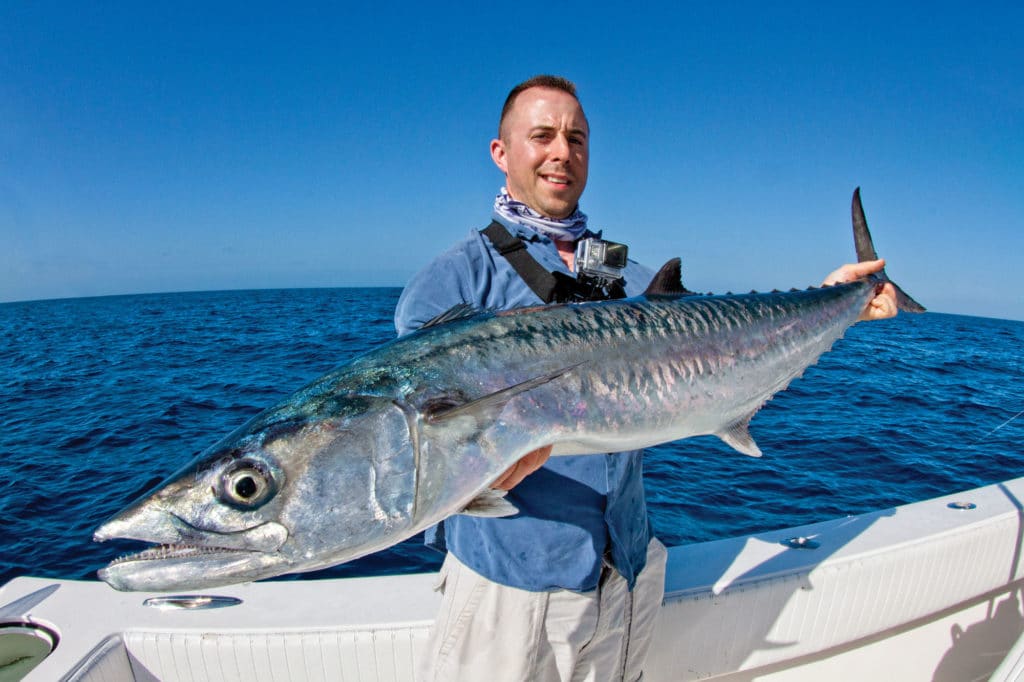
We left Freeport, Texas, in the late afternoon and headed offshore to a deepwater drilling ship to look for tuna. We arrived after dark, but the rig lights had the surrounding water lit up like the sky on the Fourth of July. Blackfins were busting at the surface, attacking whatever forage was drawn near the structure by the bright lighting and, every once in a while, a big yellowfin tore a hole in the water in unmistakable fashion.
Armed with 8-inch Yo-Zuri Sashimi Bull Metallic poppers on spinning gear, we made slow drifts around the ship, picking off a dozen blackfins in the 10- to 15-pound class, and adding a 75-pound yellowfin as a kicker. After daybreak, when the action subsided, we switched to trolling lures. Offshore in the Gulf of Mexico, you can expect to encounter anything from wahoo to blue marlin. While you catch billfish and both blackfin and yellowfin tuna primarily around structure 50 to 75 miles out, the majority of offshore anglers in Texas spend their time fishing closer to shore, where they can double down on multiple species, from red snapper and grouper to wahoo, king mackerel, ling (cobia) and dorado. The last three are frequently caught just 25 to 35 miles out, around floating debris, grass lines, oil platforms, man-made reefs or anchored shrimp boats.
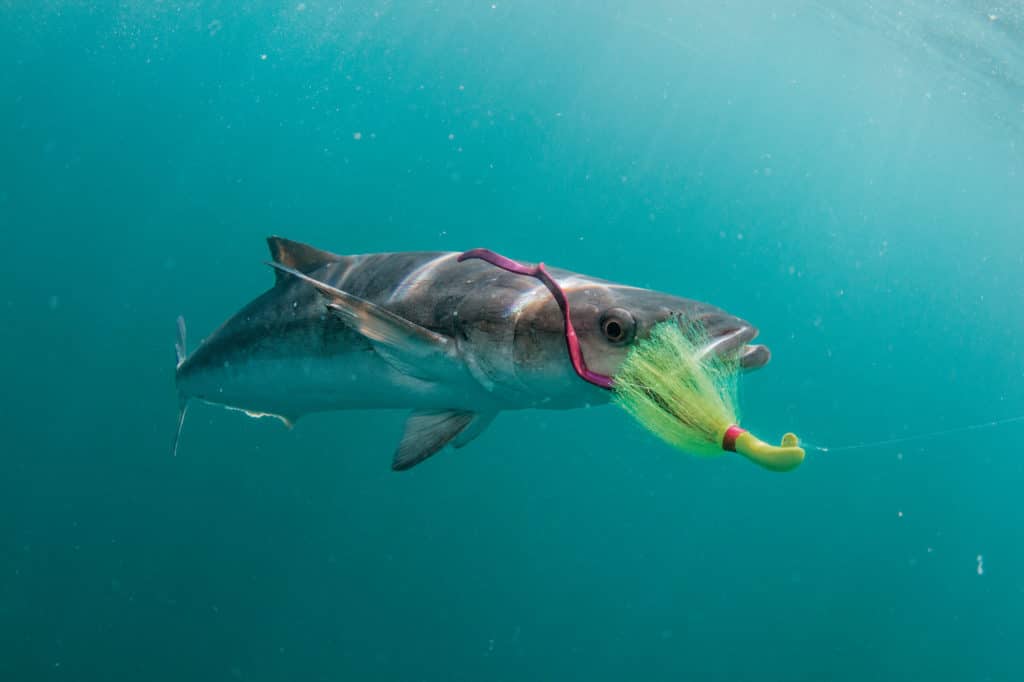
Some of best water for kings lies offshore of the Port O’Connor jetties, on the middle Texas coast. When the weather, wind and water are right, kings can be caught from the jetties to about 25 miles out. Last summer, it wasn’t unusual to run to the Catwalk rigs, about 8 miles out, and catch over 20 kings in a few hours.
The key to catching king mackerel off the Texas coast is finding dark-green water that is clear and has a little current. If you can’t find it near the oil rigs, search for fish by putting out two lines and drifting until you get bit.
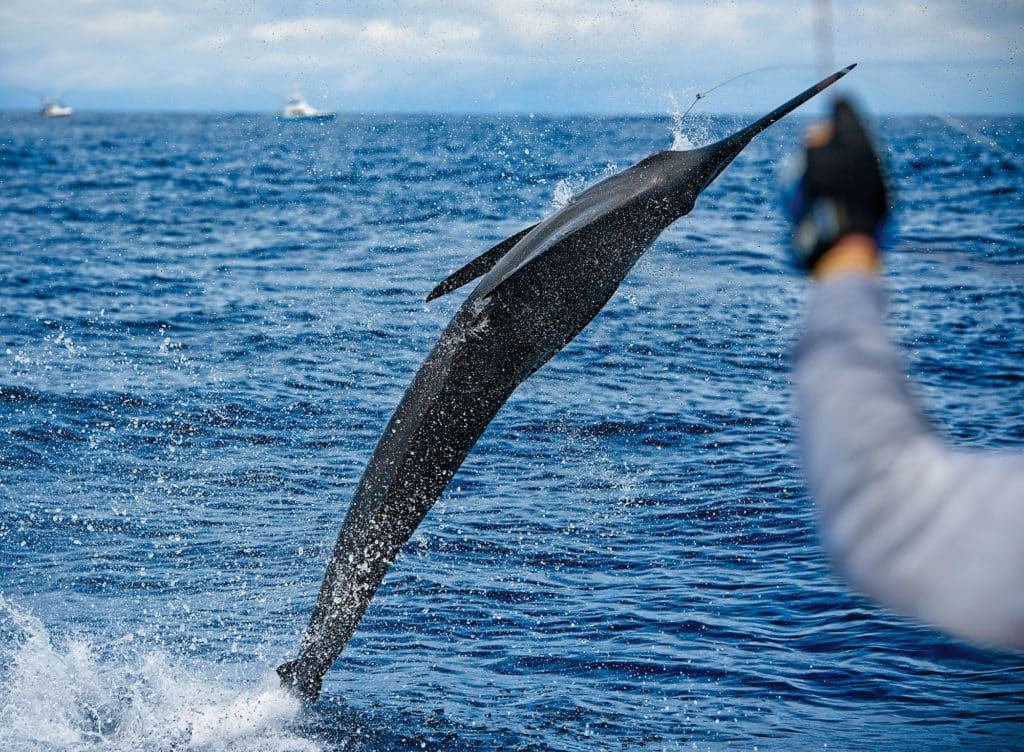
If you’re dead-set on catching big kings, definitely go with live baits. Menhaden, herring and pinfish work, but friskier blue runners (hardtails) are the top choice, and it doesn’t take long to get a day’s supply using sabiki rigs around most oil and gas platforms. The best way to fish them is to either bump-troll or free-line.
Keep in mind that sharp-toothed kingfish often kill or mame live baits during high-speed attacks, then circle back to grab the remains. Give fish the chance to return for the spoils before you reel in a bait following a missed strike.
Rigged baits also work on king mackerel, especially ribbonfish and Spanish sardines. Using a Dave Workman Jr. Ribbonfish King Rig, named after the three-time Southern Kingfish Association Angler of the Year who came up with it, is perhaps the most productive way to fish ribbonfish. The rig features single-strand wire, a 3/0 hook through the snout of the bait, and No. 4 trebles pinned along its body.
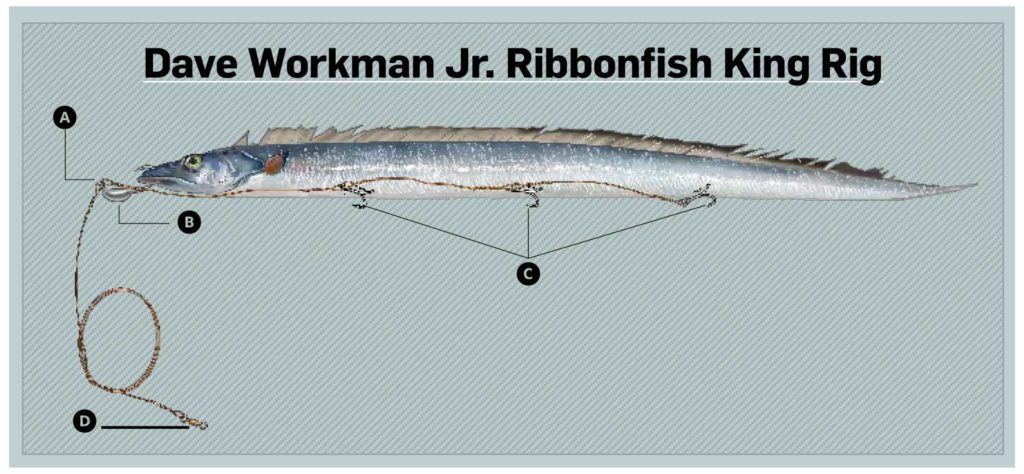
Of course, king mackerel also fall for artificials such as the popular MirrOlure Big Game series of swimming and diving plugs, which can be trolled at 2 to 9 knots, 12 to 25 feet deep to better cover the water column. Blue-white-silver, pink-chartreuse-silver, and pink-and-silver are particularly effective colors. Drone spoons and similar flashy trolling spoons also do the trick and are less likely to foul when there’s floating grass in the water. However, a downrigger or trolling weight is required to keep the spoon working at the desired depth, some 10 to 20 feet below the surface.
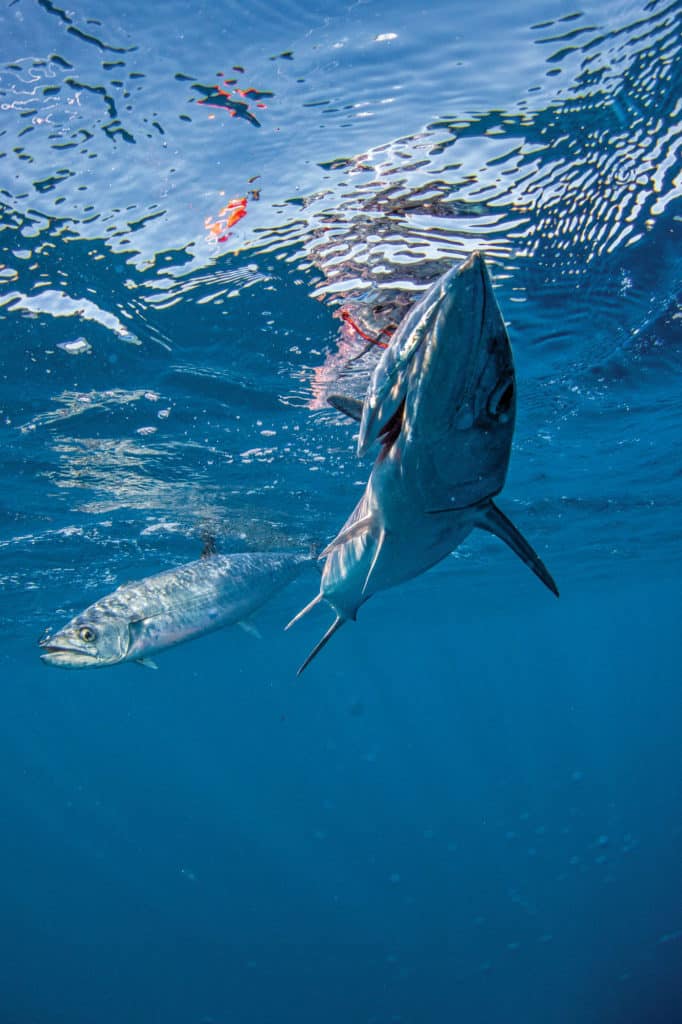
When it comes to baits for ling, time-proven favorites are live shrimp, pinfish, croakers and hardtails, but the curious fish will hit just about anything they see. That includes topwaters, spoons, jigs and soft-plastics. Because ling frequently travel in pods, competition with group mates often forces the fish to eat a bait or lure without a prior close inspection, a rash decision that bodes well for anglers.
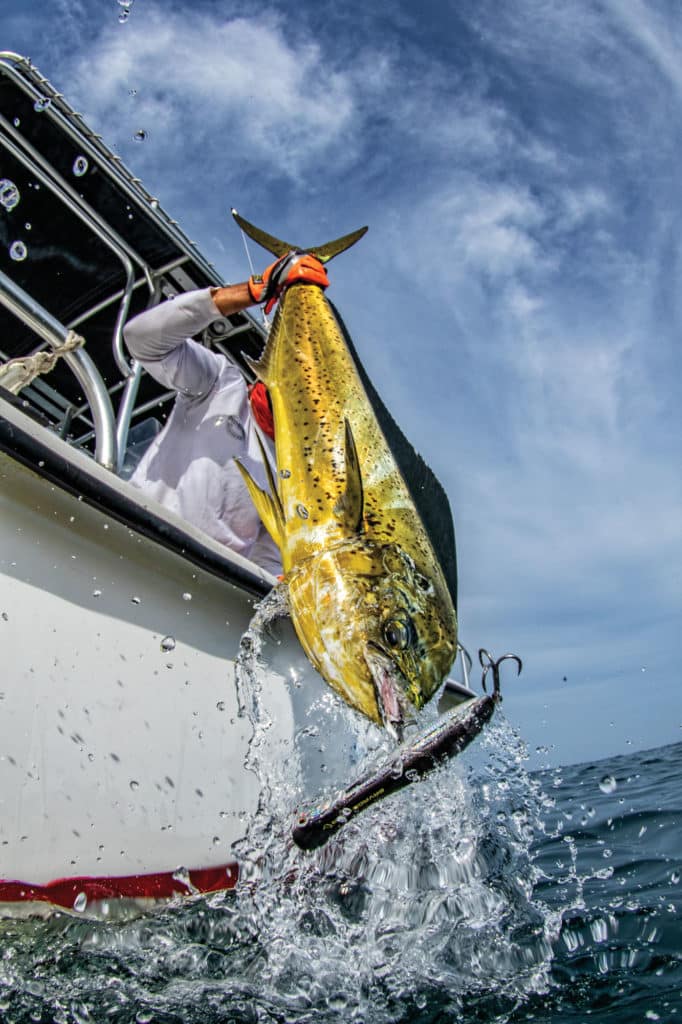
For dorado, both trolling and running-and-gunning pay off. Many anglers combine both tactics, looking for flotsam at cruising speed, then throttling down to troll along any fishy-looking weed line or other debris they come across. Voracious and frequently aggressive, dorado rarely turn down any live bait. However, rigged ballyhoo and a wide range of skirted trolling lures and daisy chains also do a number on the colorful fish. Chuggers and poppers claim their share as well, and working one of these loudly often brings big fish that were hanging 20, 30 or 50 feet down to the surface
to investigate.
Having a pitch bait rigged on a spinning outfit, ready to cast at any big bull or cow that comes within range, is another smart way to hook larger specimens, which tend to travel in pairs or trios (one bull and two cows), and typically refuse to leave an area without their mates, affording anglers excellent chances for double or triple hookups.
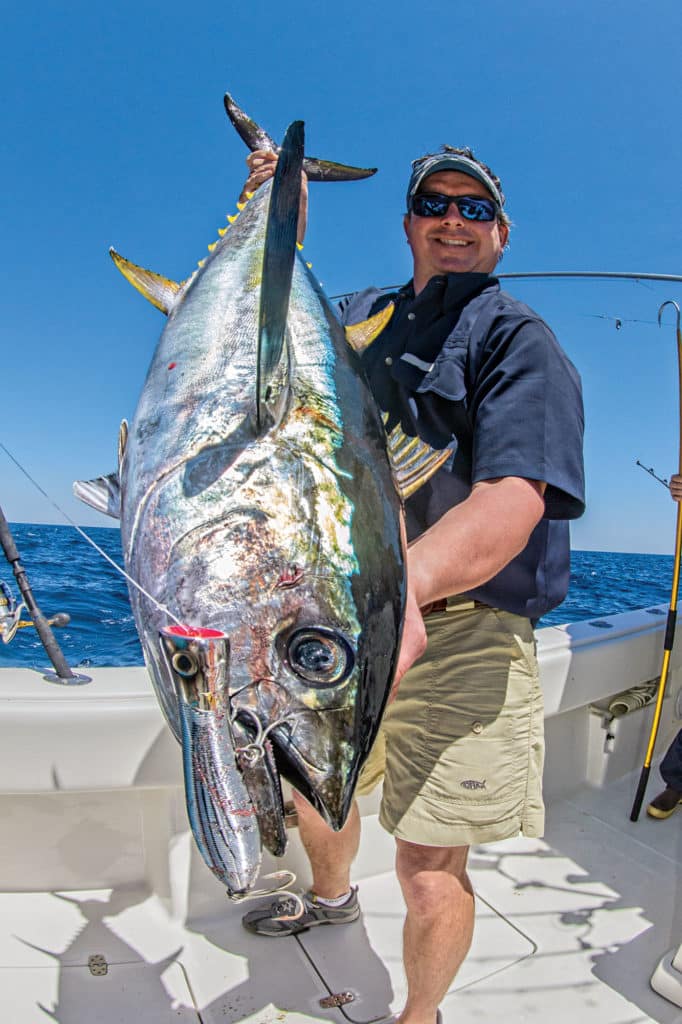
As for blackfin tuna, locating some sort of forage—be it flying fish, an aggregation of baitfish around an oil rig, or the discards from an anchored shrimp boat culling its catch—is essential. Numerous artificials, from cedar plugs to trolling feathers, skirted trolling lures, and swimming and diving plugs, prove effective and enable anglers to cover a lot of water. But rigged natural baits and especially live ones are hard to beat.
While similar to those intended for dolphin, trolling baits for blackfin tuna produce best when fished farther behind the boat’s transom. And the Stealth Rig, which consists of a trolling feather, usually purple-and-black or red-and-black, rigged on a 30-foot leader of 40-pound fluorocarbon with a wind-on swivel on the opposite end, oftentimes takes keen-eyed blackfins when it seems that absolutely nothing else will.
SWS Planner
What: Kingfish, cobia, dorado and blackfin tuna
When: May through October
Who:
The following charter operations can put you on fish and shorten the learning curve:
Port O’Connor, Texas
Capt. Rusty Tronicek, Rusty’s Charters, 361-798-6319
Capt. Michael Littlejohn, Port O’Connor Offshore Adventures, 903-441-3937
Port Aransas, Texas
Capt. Michael Matthews, Dolphin Dock Charters, 361-749-4188
Port Mansfield, Texas
Capt. Chad Kinney, Bamm Bamm Fishing Charters. 956-802-2269
SWS Tackle Box
Rods: 6 1⁄2– to 7-foot, 30- to 50-pound class
Reels: 20- to 50-class conventional; 6000- to 10000-class spinning; Abu Garcia Ambassadeur 7000 or equivalent baitcasting
Line: 30- to 80-pound
Baits: Live blue runners, pinfish, croakers and shrimp for a variety of species; rigged ribbonfish for kings
Lures: MirrOlure Big Game series or similar swimming and diving plugs, Yo-Zuri Sashimi Bull Metallic poppers or similar offshore topwaters, skirted trolling lures, Drone spoons or similar trolling spoons, and bucktail jigs









